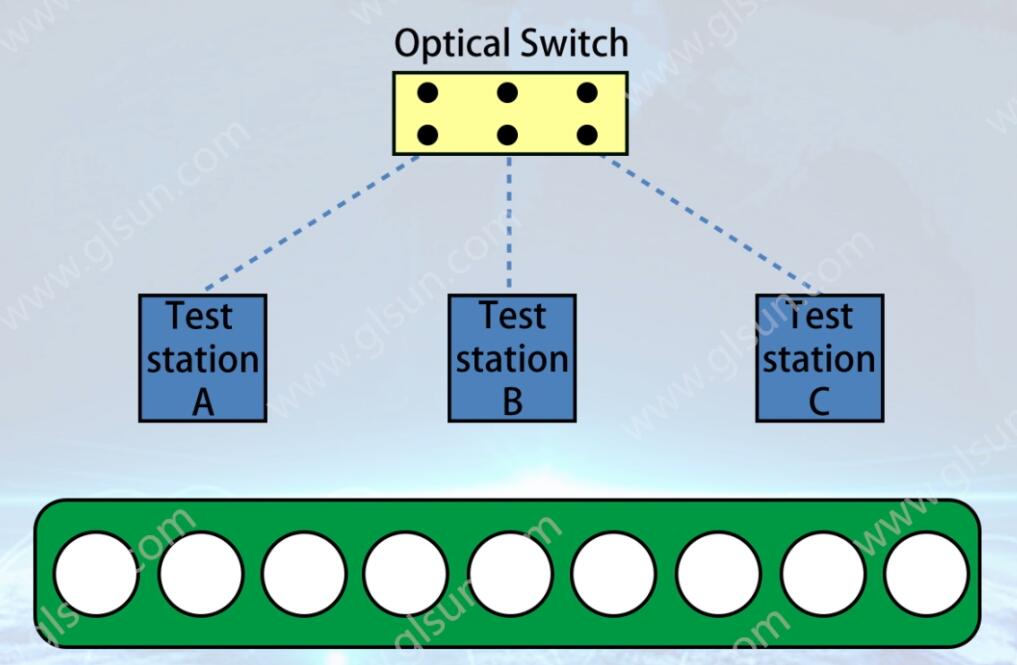What are the Typical Applications of Magneto-Optical Switches?
2024-08-02
Magnetic optical switches represent a unique category within the realm of optical switching technologies. These switches utilize the Faraday effect to control the path of light, offering a robust and versatile solution for various applications. Unlike traditional mechanical or electro-optic switches, magnetic optical switches rely on the interaction between light and a magneto-optical material in the presence of a magnetic field. This interaction results in a rotation of the polarization plane of the light, which can be utilized to switch the optical signal.
Magnetic optical switches boast several distinctive features that set them apart from other types of optical switches:
1) Reliability: Magnetic optical switches have no moving parts, making them highly reliable and durable.
2) Speed: They operate at extremely fast speeds, enabling rapid switching.
3) Stability: The performance is not affected by mechanical wear or environmental changes.
4) Compactness: They are compact and can be easily integrated into existing systems.
5)Low Power Consumption: Magnetic optical switches require minimal power to function.
Compared to other optical switches, magnetic optical switches offer superior stability over time, high reliability due to their solid-state nature, and they are less prone to mechanical failures.
The diverse applications of magnetic optical switches span across multiple fields, including testing, telecommunications, and sensing. Let's delve deeper into these areas, focusing particularly on testing, telecommunications, and sensing, with a detailed exploration of wind LiDAR applications.
Testing
In the realm of testing, magnetic optical switches find use in various setups where precise control over optical signals is required. For instance, in laboratory settings, magnetic optical switches enable researchers to conduct experiments that demand high-speed switching without introducing any mechanical vibrations or disturbances. They also facilitate accurate calibration and validation processes, ensuring the integrity of experimental data.

Telecommunications
Within telecommunication networks, magnetic optical switches play a crucial role in routing and managing data traffic. Their ability to handle high-speed data transmission makes them ideal for next-generation communication systems. By leveraging the inherent properties of magneto-optical materials, these switches can support dense wavelength division multiplexing (DWDM) technologies, allowing for increased bandwidth and improved network efficiency.
Sensing
Sensing applications benefit significantly from the unique capabilities of magnetic optical switches. One notable example is in the development of advanced wind LiDAR (Light Detection and Ranging) systems.
Magnetic optical switches are employed in coherent Doppler wind LiDAR systems, which are used for atmospheric monitoring and weather forecasting. These systems rely on the precise control of laser beams to measure wind speed and direction accurately. The Faraday effect in magnetic optical switches allows for the modulation of the polarization state of the laser beam, enabling the system to differentiate between backscattered signals and background noise.

In wind LiDAR systems, the laser beam is directed into the atmosphere, and the reflected light is collected and analyzed to determine the wind characteristics. The use of magnetic optical switches in such systems ensures high-speed switching and precise polarization control, which are critical for achieving accurate wind measurements. The solid-state nature of magnetic optical switches ensures that they can withstand the environmental stresses encountered in field deployments, while their high stability and low insertion loss contribute to the overall performance of the LiDAR system.
For instance, in coherent Doppler wind LiDAR systems, the laser beam is modulated using a magnetic optical switch to create a specific polarization state. When this beam interacts with atmospheric particles, the backscattered light retains information about the wind velocity. The magnetic optical switch then helps to filter out unwanted signals, ensuring that only the relevant information is processed. This filtering process is made possible by the unique ability of magnetic optical switches to manipulate the polarization of light, thereby enhancing the signal-to-noise ratio and improving the accuracy of wind measurements.
The use of magnetic optical switches in wind LiDAR systems is pivotal for atmospheric research, meteorology, and aviation safety. These switches enable researchers and meteorologists to monitor wind patterns with unprecedented precision, contributing to better weather forecasting and understanding of climate change.







